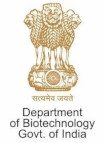An ultrastructural report of human articular cartilage resident cells in correlation with their phenotypic characteristics.
| Title | An ultrastructural report of human articular cartilage resident cells in correlation with their phenotypic characteristics. |
| Publication Type | Journal Article |
| Year of Publication | 2024 |
| Authors | Francis DVinod, Rajeswari AJayakumara, Stephen JBino, Parasuraman G, J JLisha, Livingston A, RANI SANDYA, Daniel AJob, Sathishkumar S, Vinod E |
| Journal | J Histotechnol |
| Volume | 47 |
| Issue | 1 |
| Pagination | 23-38 |
| Date Published | 2024 Mar |
| ISSN | 2046-0236 |
| Keywords | Cartilage, Articular, Cell Differentiation, Chondrocytes, Collagen, Humans, Mesenchymal Stem Cells |
| Abstract | The recent discovery of progenitors based on their differential fibronectin-adhesion (FAA-CPs) and migratory-based (MCPs) assay has evoked interest due to their superiority in terms of their efficient chondrogenesis and reduced hypertrophic propensity. This study aims to isolate and enrich three articular cartilage subsets, chondrocytes, FAA-CPs, and MCPs, and compare their undifferentiated and chondrogenic differentiated status, using in-vitro phenotypical characterization in correlation with ultrastructural analysis using Transmission Electron Microscopy (TEM). Following informed consent, cartilage shavings were procured from a non-diseased human ankle joint and cultured to obtain the three subsets. Chondrocytes exhibited higher CD106 and lower CD49b and CD146 levels. Following chondrogenic differentiation, corroborative results were seen, with the MCP group showing the highest GAG/DNA ratio levels and uptake of extracellular matrix stain as compared to the FAA-CP group. TEM analysis of the chondrocytes revealed the presence of more autolytic cells with disintegrated cytoplasm and plasma membrane. The differentiated FAA-CPs and MCPs displayed higher collagen and rough endoplasmic reticulum. The results presented in this study provide novel information on the ultrastructural characteristics of cartilage resident cells, with the chondrocyte group displaying features of terminal differentiation. Both progenitor subtypes showed superiority in varied contexts, with greater collagen fibrils and greater GAG content in MCPs. The display of preferential and differentiation traits sheds insight on the necessity to enrich progenitors and coculturing them with the general pool of constituent cells to combine their advantages and reduce their drawbacks to achieve a regenerative tissue displaying genuine hyaline-like repair while limiting their terminal differentiation. |
| DOI | 10.1080/01478885.2023.2278118 |
| Alternate Journal | J Histotechnol |
| PubMed ID | 37966827 |

